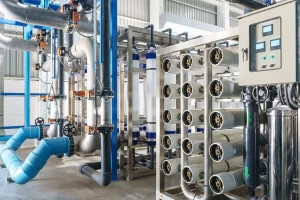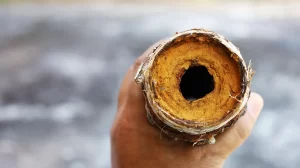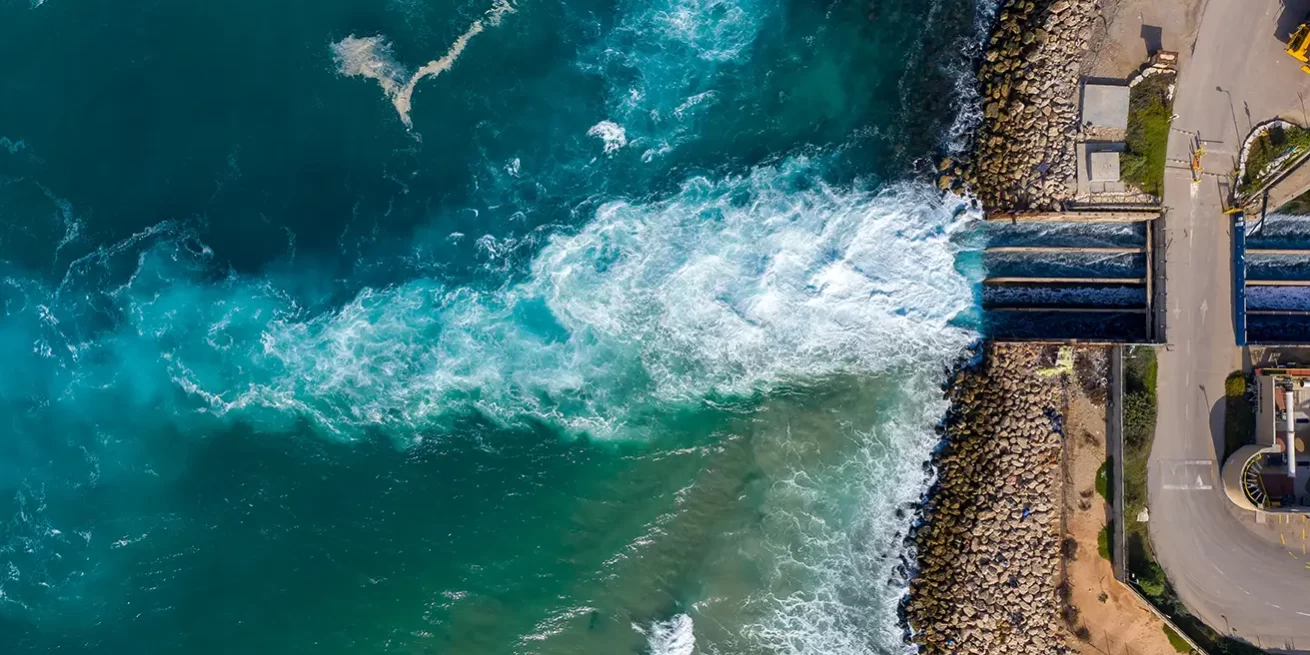Chlorine Dioxide has emerged as a highly efficient microbiological biocide, cherished for its potent efficacy, superior biofilm penetration, low disinfection byproduct generation, and overall environmental responsibility.
While widely adopted in smaller water systems, the application of Chlorine Dioxide (ClO2) in high-volume seawater handling systems faced hurdles due to operational costs.

Recent advancements, inspired by pulp and paper industry chemistry, have significantly reduced ClO2 production costs, sparking a renewed interest in its potential for large-scale seawater handling systems. This article compares ClO2 with chlorine-based biocides and other oxidising agents concerning biocidal properties and their impact on cooling system materials in seawater environments.
Chlorine Dioxide Production Methods
The production of Chlorine Dioxide primarily involves metal chlorite or chlorate salts reacting with acids or ion exchange resins. Sodium Chlorate, mainly derived from the electrolysis of hot sodium chloride solutions, serves as a key feedstock.
Historically prevalent in the pulp and paper industry, ClO2‘s on-site generation often employed various chlorate-based chemistries. Innovations, especially in on-site generation using Sodium Chlorate and Hydrogen Peroxide pioneered by Eka Chemicals A.B. (Sweden), have resulted in a breakthrough. This patented technology, utilising a single precursor blend of Sodium Chlorate and Hydrogen Peroxide, has made ClO2 cost-competitive with other treatments, particularly in the realm of high-volume industrial seawater handling systems.
Importance of Biofilm Removal with Chlorine Dioxide in Seawater

Biofilm, a gel-like matrix formed by bacteria, poses significant challenges in seawater systems. ClO2‘s unique ability to penetrate biofilm becomes paramount in seawater handling, facilitating effective removal and preventing Microbially Induced Corrosion (MIC).
In seawater environments, where thermal efficiency is critical, biofilm on heat transfer surfaces can drastically reduce efficiency. Severe cases, such as fouled fill in cooling towers, can lead to collapse. ClO2‘s biofilm removal capabilities specifically address these challenges, ensuring sustained efficiency in seawater-based applications.
Chlorine Dioxide Comparison with Other Biocides in Seawater
Comparing ClO2 with non-oxidising biocides reveals the superior effectiveness of ClO2 in seawater environments. While non-oxidising biocides may boast extended half-lives, their efficacy in removing biofilms, especially in seawater, is notably inferior to oxidising biocides like ClO2. Periodic cleandowns with ClO2 become integral components of maintenance regimes in seawater applications.
ClO2‘s advantages over chlorine compounds gain significance in seawater systems, with minimal formation of disinfection by-products, adaptability to a wide pH range, and efficient biofouling control achievable at lower doses.
Field Effects of Chlorine Dioxide with Respect to Corrosivity in Seawater
In seawater handling systems, the low oxidation strength and compatibility of ClO2 with inhibitor formulations position it as an ideal alternative to On Site Electrochlorination, effectively reducing corrosion risks. Transitioning from non-oxidising to oxidising regimes is seamlessly addressed by ClO2, offering a balanced solution that caters to microbiological concerns without compromising corrosion rates.
Chlorine Dioxide’s versatility and cost-effectiveness have positioned it as a sought-after biocide for seawater handling systems. Recent technological advancements have mitigated cost concerns, making ClO2 application economically viable in seawater applications. Its targeted biofilm removal capabilities at low doses present a robust solution, effectively mitigating corrosion risks and ensuring the optimal performance of seawater handling systems.
Contact Scotmas for personalised guidance on implementing these strategies or any inquiries regarding our products and services.






